Basic Pottery Repair
by Bob Brooke
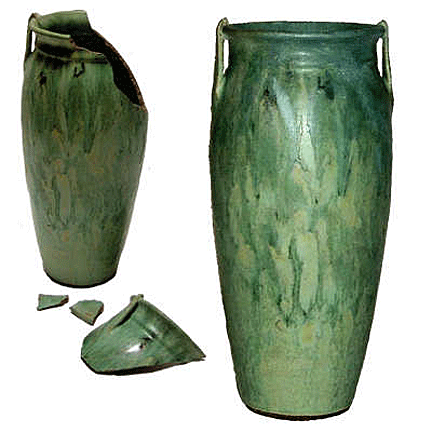 Pottery
has been an important part of everyday life for centuries. Early man
found that certain types of clay, when heated and prepared properly,
could be formed into durable and useful objects and figurines. From
common utility and cooking pots to vases to one-of-a-kind figurines
and such, pottery has remained at the forefront of every major
household throughout the world. Whether itís a priceless antique or
a sentimental heirloom, most families have at least one piece they
treasure. Pottery
has been an important part of everyday life for centuries. Early man
found that certain types of clay, when heated and prepared properly,
could be formed into durable and useful objects and figurines. From
common utility and cooking pots to vases to one-of-a-kind figurines
and such, pottery has remained at the forefront of every major
household throughout the world. Whether itís a priceless antique or
a sentimental heirloom, most families have at least one piece they
treasure.
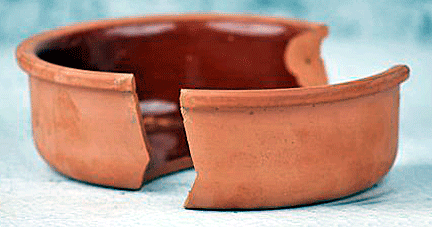 But
all pottery has one consistent flawóit breaks. If a piece breaks in
say two or three pieces, itís not the end of the world. However, if
it shatters, it might as well be. But
all pottery has one consistent flawóit breaks. If a piece breaks in
say two or three pieces, itís not the end of the world. However, if
it shatters, it might as well be.
And just as pottery breaks, it can be repaired. If itís a simple
break, it most likely can be glued back together as a do-it-yourself
project. However, if it shatters, itís best to seek out the service
of a professional pottery restorer.
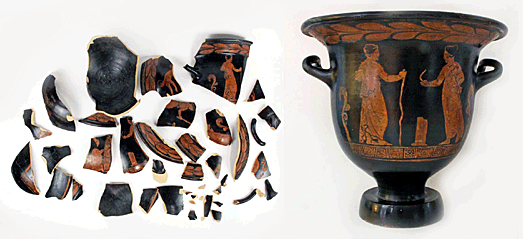
As pottery ages, its
monetary and sentimental value increases. Unfortunately, so does the
number and types of cracks and chips that may appear. This invariably
creates small cracks or chips in the surface that may affect not only
the aesthetic appeal, but the overall value of the piece. Fortunately,
most pottery can be repaired with a little tender loving care.
Basic Pottery Repair
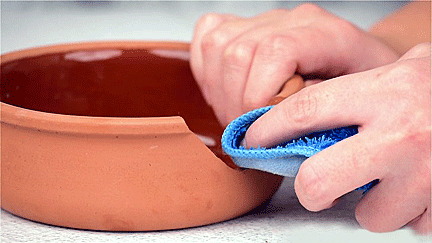 Basic
pottery repair involves gluing the broken pieces back together.
Unfortunately, most people use the wrong type of glue and donít take the
necessary care to do it right. Basic
pottery repair involves gluing the broken pieces back together.
Unfortunately, most people use the wrong type of glue and donít take the
necessary care to do it right.
If a piece is newly broken, then the pieces donít require any
preparation. However, if the piece has broken before and was repaired,
the pieces must be cleaned of all previous glue.
Pottery is porous and as such soaks up any glue used to hold it
together. Before starting, remove any old glue, clean thoroughly, and
remove all loose particles. Before starting the repair, make sure parts
are thoroughly dry. Cover working area with sheets of paper to avoid
damage to the surface being worked on.
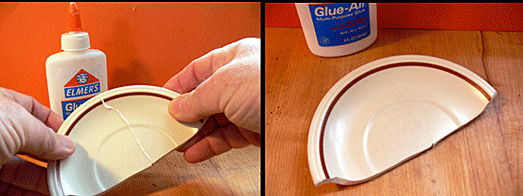
Basically, there are two types of glue that can be used to repair
pottery. For one or two simple breaks on porous earthenware that wonít
be getting wet, Elmerís Glue is fine. Put a small amount on the full
length of one side of the broken piece. Place it against the edge of the
pot from which it broke. Using a slight but even pressure, gently rub
the pieces back and forth until they form a tight fit. Very gently wipe
off the excess glue on both the inside and outside of the pot with a
damp paper towel, then use a small piece of removable blue painterís
tape to hold the piece to the pot while the glue sets. Make sure to glue
only one piece at a time. Patience is the key here.
Once the glue has set on the first piece, gently fit the remaining ones
together without glue to make sure that there are no gaps. Then proceed
with the second piece. Once the first one is set, itís usually easier to
glue one or two pieces in the next step.
Advanced Pottery Repair
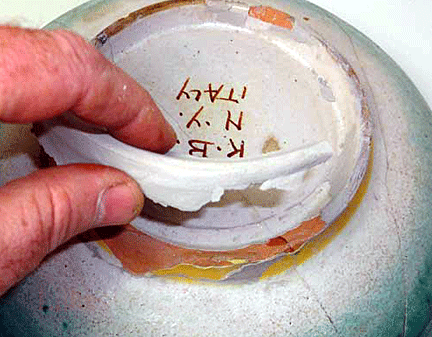 For
pieces that will be getting wet with use or will be used outdoors, a
two-part clear epoxy is a quick dry glue that works well. Unfortunately,
it does dry in about three minutes, so thereís little time to apply and
adjust the pieces. "Dry run" the order of cementing the pieces to
determine the order of gluing them together. For
pieces that will be getting wet with use or will be used outdoors, a
two-part clear epoxy is a quick dry glue that works well. Unfortunately,
it does dry in about three minutes, so thereís little time to apply and
adjust the pieces. "Dry run" the order of cementing the pieces to
determine the order of gluing them together.
Epoxy comes in two tubesóone of the glue and one of the setting agent.
Mix equal parts of the epoxy togetheróonly enough for one or two pieces.
Once the pieces are together, the glue will set very quickly, so itís
possible to glue one or two pieces at a time.
For large planters or earthenware pots used for plants outdoors, clear
Gorilla Glue is a good solution. This glue is very strong and
waterproof. The difference with this glue compared to other glues is
that the surface of the receiving edge must be wet first. A very small
amount of glue is then applied to the edge of the broken piece. Itís
important not to put more than a very small amount on the edge of the
broken piece as the glue expands as it sets. Be sure to wipe any excess
from the glued joint and tape it together with the blue painterís tape.
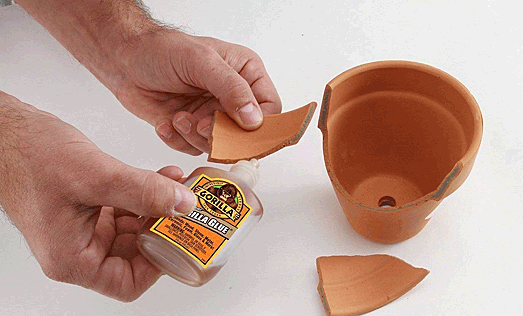
Using an Antique Pottery Restorer
For antique pottery thatís especially valuable, itís a good idea to use
the service of an antique pottery restoration expert. While the service
wonít be cheap, itís worth it in the long run to maintain the antique
value of the piece.
<
Back to Caring for Your Collections
Archives
Next Article
>
|
